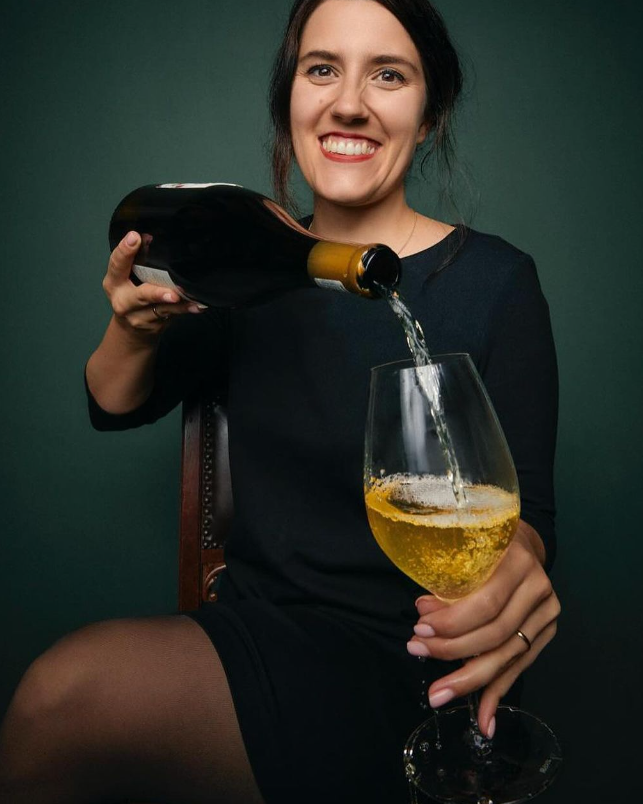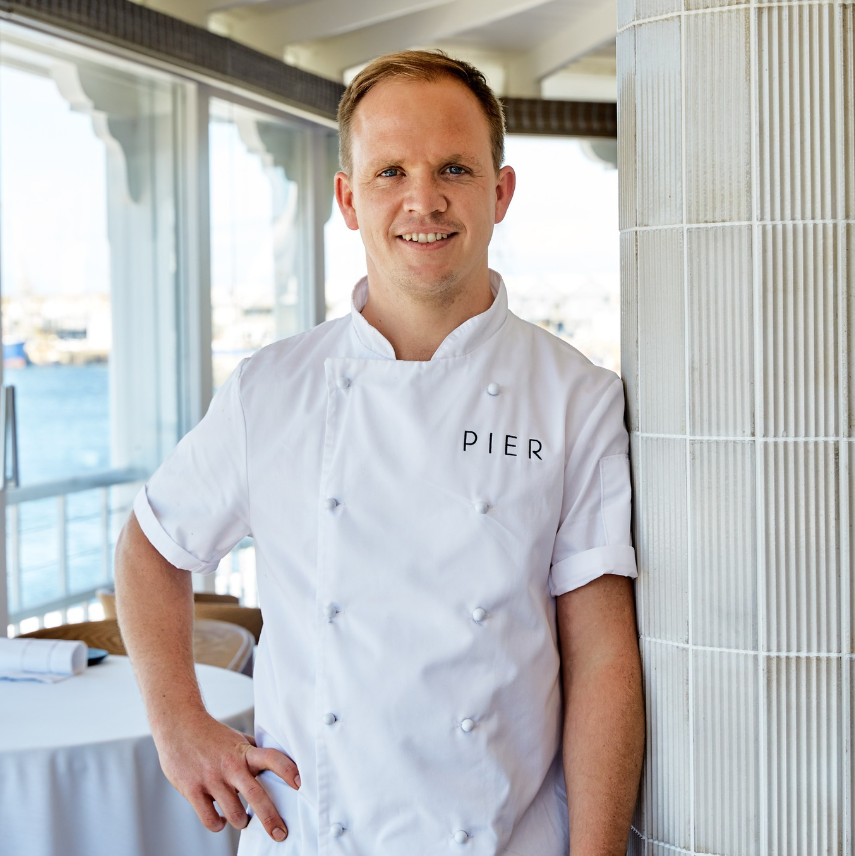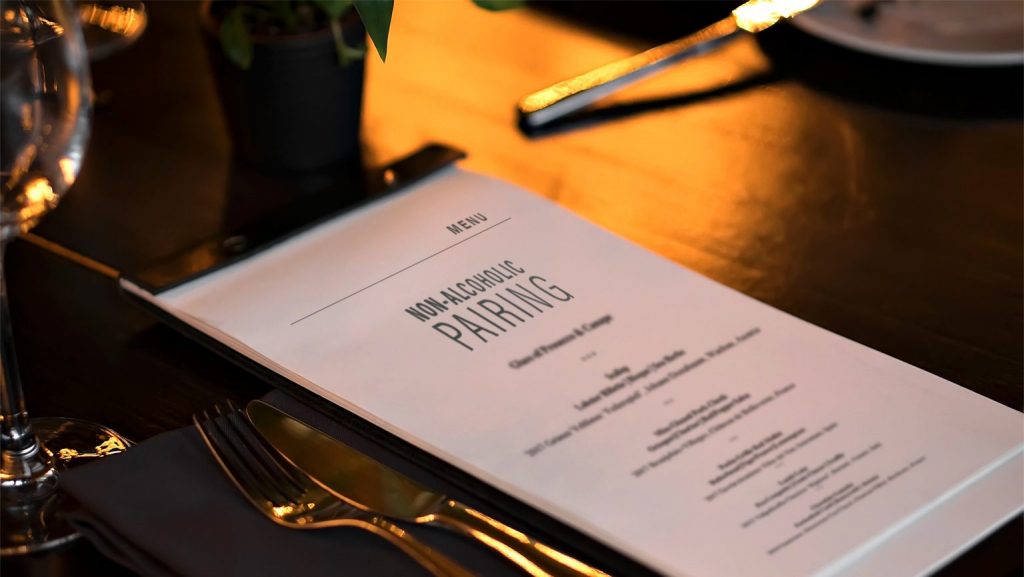Fine dining and fine wines have been the preferred pairing since long before Escoffier revolutionised haute cuisine. The current worldwide movement of non-alcoholic drinks, which has seen most restaurants on the World 50 Best list sponsored by S.Pellegrino & Acqua Panna and in the Michelin Guide applying their creativity to tasting menus, is also here to stay in South Africa’s restaurants.
“We have always had a non-alcoholic pairing menu, but we have seen a significant increase in demand and interest over time,” says Jennifer Hugé of FYN. “The global lifestyle has changed, people are drinking less and leaning more towards healthier lifestyles.”
No longer do ‘sober conscious’ diners miss out on the pairing dimension of a tasting menu. Alongside the essential bottle of S.Pellegrino sparkling mineral water, they are now sipping on beautifully crafted non-alcoholic drinks which are thoughtfully paired to complement the chef’s menu.
“We create most of our pairings in-house,” says Hugé. “Versatility is always a key consideration, giving the guests a full experience. We make our own kombucha and fruit shrub infusions as well as fat-washed butter.” She works together with the head chef of each restaurant in the FYN group to develop the pairings. “It is important that the non-alcoholic options are made alongside the food. It gives us complete control over the final flavour, often complimenting the dish better than wine, which is an inherited creation.” An example from the latest non-alcoholic pairing menu is a red rooibos infusion with caramel and puffed rice, giving a caramelised, nutty character that pairs superbly with their mushroom crème brûlée.

The Living Room at Summerhill Estate introduced their non-alcoholic pairing in 2019 and haven’t looked back. “About 20% of our guests now opt for the non-alcoholic either for religious or health reasons,” says Johanna Richter, head of the wine programme. The pairing has evolved from homemade juices, syrups, and mixers to include different teas, vinegars, kombuchas, and extractions, many of which come from their kitchen garden. “My current favourite non-alcoholic drink is made with habaneros, apple, and lime leaf. We use pickled habaneros from our kitchen stock and combine this with our homemade apple juice and ginger beer.”
The La Colombe group embraced non-alcoholic pairings to adapt to lockdown regulations during the pandemic, and when sister restaurant Pier opened in 2021, they decided to include it as a standard offering. “In summer there is a slightly higher demand due to the influx of foreign guests, during our winter months it slows down a bit,” says front-of-house manager Aaron Farqhar. “Guests that don’t drink alcohol still want the full immersive experience.”
Their pairings are a collaboration between chef John Norris-Rogers and their bar manager. “Our offering is mostly cocktail-based,” says Norris-Rogers. “Virgin cocktails are just as tasty as alcoholic ones and it’s relatively easy to balance a drink without alcohol, by adding a sweet, sour, or thickening component. Concentrated fruit, savoury, and botanical elements play a big role. I love our malted chai latte, which goes with our octopus, smoked mussel, chorizo, and sourdough dish. It’s essentially a sour cocktail base with sweet spice and savoury flavours, perfectly balanced.”
At Salsify the non-alcoholic pairings are curated on demand, “On average we receive about three requests a month, mostly from pregnant women,” says sommelier, Victor Okolo. “We design a balance of teas and mocktails for the whole menu.” It’s very much a collaboration between Chef Ryan Cole and Okolo. The teas are pre-made and chilled with sugar syrup on the side. Mocktails are made before the dish leaves the kitchen. “Interestingly, it’s more challenging to work with the mocktails than with the teas,” he says. “My current favourite is the shiso mocktail with a few ground chilies infused into it, which pairs with the springbok tartare – it’s sublime.”

READ MORE: The rise of the sober curious: Non-alcoholic cocktails hit record highs
Another useful element in the mixologist’s repertoire is the Sanpellegrino range of Italian Sparkling drinks. “These are ideal for mixology, especially Pompelmo and Chinotto bearing notes of exotic citrus fruit from the Mediterranean, super flavourful for non-alcoholic cocktails,” says Ania Odyniecka – Sales & Marketing Manager for Sanpellegrino & Acqua Panna in South Africa. “I consider these beverages to be in a class of their own.”
All the chefs and sommeliers interviewed create pairings in-house rather than rely on existing non-alcoholic or de-alcoholised wines and spirits, but they do keep an eye on the local market. “With wines, the options are still very limited – there are only a few producers, “says Hugé. “Non-alcoholic spirits are easier to find, and the market has certainly grown over time.
There are non-alcoholic gin options, aperitif styles, beers, and ciders available now.” She names Devil’s Peak and Loxtonia Cider as reliable suppliers, and a de-alcoholised MCC called Allure from Graham Beck (which the La Colombe group also recommends). However, she warns that de-alcoholised beverages can have a residual 0.5% alcohol, which is important to be aware of.
Hugé says that sometimes a quality mineral water such as S.Pellegrino or Acqua Panna is all you need to accompany a dish, “What I really enjoy is the S.Pellegrino sparkling mineral water – the light fizziness provides a lively sensation that beautifully compliments the delicate flavours of sashimi, with a little squeeze of lemon will add acidity to the sashimi.”
“Historically our brands have always been associated with the gastronomy industry,” says Odyniecka. “We believe that good food, no matter the occasion should always be paired with pure natural mineral water. The taste of water is defined by the terroir from source to bottle and its mineral properties. Other than the factor of ‘keeping hydrated’, a natural water elevates the dining experience.”

What comes through from all the restaurants is a sense of intrigue, enjoyment, and eagerness to rise to the challenge sparked by this fresh arena of drink curation. “What’s exciting about the non-alcoholic pairing is that it’s become an integral part of how we minimise our food waste,” says Richter. “For example, we use breadcrumbs and unused marigold offcuts to make a non-alcoholic beer – the marigold acts as the hops.”
And it’s inspiring them to explore new techniques and ingredients. “One thing that excites me at the moment is air freeze dying, a new technique in South Africa,” says Hugé. “This method allows us to preserve the highest quality of an ingredient and reduces wastage.” They are working closely with local farmers like Meuse Farm to supply interesting and unique ingredients.
Rather than being seen as a dietary restriction, the alcohol-free movement is adding new horizons to the fine dining scene. “Being able to offer non-alcoholic pairings gives us a greater reach. It allows us to offer a more creative and diverse experience as a whole at Pier,” says Norris-Rogers. And the new offerings are even inspiring pairing-envy in some circles… FYN is introducing a new offering of half pairings so that diners can sample both the wine and non-alcoholic pairings with each dish on the tasting menu.
Thinking outside the box, exploring new ingredients and techniques, and taking alcohol-free drinks into new dimensions – umami, bitter, sour, salty, and sweet – the non-alcoholic pairing has already become an essential part of the fine dining experience.
ALSO SEE: How to stock a non-alcoholic bar at home, according to an expert mixologist
How to stock a non-alcoholic bar at home, according to an expert mixologist
Feature image: Unsplash

